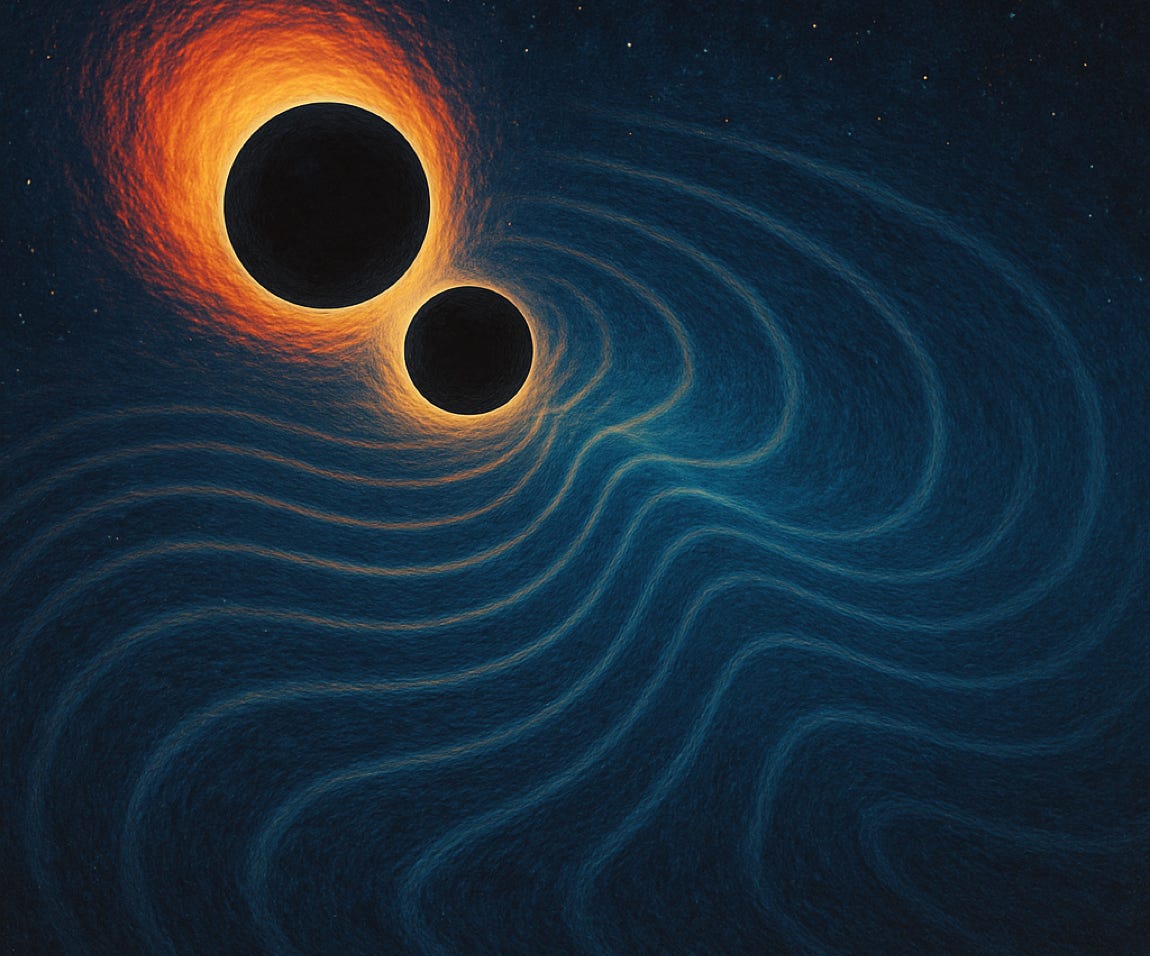by Florentina Pîslan, PhD student
09.05.2025

Currently, we know gravitational waves can be divided into four distinct categories based on their sources, detection methods, and frequencies: stochastic, continuous, inspiral, and burst. When two black holes collide, they create inspiral gravitational waves that not only propagate through the Universe, but also leave a permanent imprint on the space-time continuum - much like how a chair leaves an indentation in a carpet. This phenomenon is called the 'memory effect,' which could hold the key to discovering small, ancient black holes potentially formed in the early Universe, known as Primordial Black Holes (PBHs).
Why are these objects so fascinating? Because they might be fragments from the Big Bang (even older than stars!) - as small as a city, yet as dense as a planet, and possibly the leading candidates for dark matter.
In the paper 'Gravitational Wave Memory of Primordial Black Hole Mergers’ , researchers investigate whether future gravitational wave observatories like LISA and the Einstein Telescope could detect these objects. The detectors will aim to identify them both through the characteristic 'chirp' signal produced during collision and by analyzing their space-time imprint. To better understand the difference: the 'chirp' resembles an explosive but transient sound, while the memory effect is more like a permanent scar. Generally, the more massive the objects producing the 'chirp,' the easier the signal is to detect.
The study reveals that due to the tiny size of Primordial Black Holes, the memory effect might be their only detectable signature. Observing this effect could provide groundbreaking confirmation of Einstein's predictions in entirely new ways.